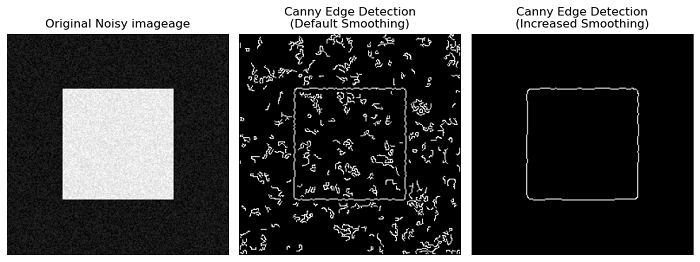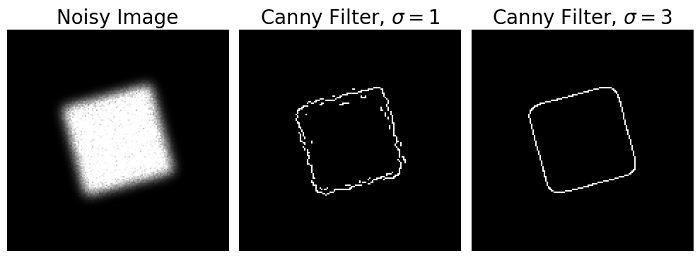
- Scikit Image – Introduction
- Scikit Image - Image Processing
- Scikit Image - Numpy Images
- Scikit Image - Image datatypes
- Scikit Image - Using Plugins
- Scikit Image - Image Handlings
- Scikit Image - Reading Images
- Scikit Image - Writing Images
- Scikit Image - Displaying Images
- Scikit Image - Image Collections
- Scikit Image - Image Stack
- Scikit Image - Multi Image
- Scikit Image - Data Visualization
- Scikit Image - Using Matplotlib
- Scikit Image - Using Ploty
- Scikit Image - Using Mayavi
- Scikit Image - Using Napari
- Scikit Image - Color Manipulation
- Scikit Image - Alpha Channel
- Scikit Image - Conversion b/w Color & Gray Values
- Scikit Image - Conversion b/w RGB & HSV
- Scikit Image - Conversion to CIE-LAB Color Space
- Scikit Image - Conversion from CIE-LAB Color Space
- Scikit Image - Conversion to luv Color Space
- Scikit Image - Conversion from luv Color Space
- Scikit Image - Image Inversion
- Scikit Image - Painting Images with Labels
- Scikit Image - Contrast & Exposure
- Scikit Image - Contrast
- Scikit Image - Contrast enhancement
- Scikit Image - Exposure
- Scikit Image - Histogram Matching
- Scikit Image - Histogram Equalization
- Scikit Image - Local Histogram Equalization
- Scikit Image - Tinting gray-scale images
- Scikit Image - Image Transformation
- Scikit Image - Scaling an image
- Scikit Image - Rotating an Image
- Scikit Image - Warping an Image
- Scikit Image - Affine Transform
- Scikit Image - Piecewise Affine Transform
- Scikit Image - ProjectiveTransform
- Scikit Image - EuclideanTransform
- Scikit Image - Radon Transform
- Scikit Image - Line Hough Transform
- Scikit Image - Probabilistic Hough Transform
- Scikit Image - Circular Hough Transforms
- Scikit Image - Elliptical Hough Transforms
- Scikit Image - Polynomial Transform
- Scikit Image - Image Pyramids
- Scikit Image - Pyramid Gaussian Transform
- Scikit Image - Pyramid Laplacian Transform
- Scikit Image - Swirl Transform
- Scikit Image - Morphological Operations
- Scikit Image - Erosion
- Scikit Image - Dilation
- Scikit Image - Black & White Tophat Morphologies
- Scikit Image - Convex Hull
- Scikit Image - Generating footprints
- Scikit Image - Isotopic Dilation & Erosion
- Scikit Image - Isotopic Closing & Opening of an Image
- Scikit Image - Skelitonizing an Image
- Scikit Image - Morphological Thinning
- Scikit Image - Masking an image
- Scikit Image - Area Closing & Opening of an Image
- Scikit Image - Diameter Closing & Opening of an Image
- Scikit Image - Morphological reconstruction of an Image
- Scikit Image - Finding local Maxima
- Scikit Image - Finding local Minima
- Scikit Image - Removing Small Holes from an Image
- Scikit Image - Removing Small Objects from an Image
- Scikit Image - Filters
- Scikit Image - Image Filters
- Scikit Image - Median Filter
- Scikit Image - Mean Filters
- Scikit Image - Morphological gray-level Filters
- Scikit Image - Gabor Filter
- Scikit Image - Gaussian Filter
- Scikit Image - Butterworth Filter
- Scikit Image - Frangi Filter
- Scikit Image - Hessian Filter
- Scikit Image - Meijering Neuriteness Filter
- Scikit Image - Sato Filter
- Scikit Image - Sobel Filter
- Scikit Image - Farid Filter
- Scikit Image - Scharr Filter
- Scikit Image - Unsharp Mask Filter
- Scikit Image - Roberts Cross Operator
- Scikit Image - Lapalace Operator
- Scikit Image - Window Functions With Images
- Scikit Image - Thresholding
- Scikit Image - Applying Threshold
- Scikit Image - Otsu Thresholding
- Scikit Image - Local thresholding
- Scikit Image - Hysteresis Thresholding
- Scikit Image - Li thresholding
- Scikit Image - Multi-Otsu Thresholding
- Scikit Image - Niblack and Sauvola Thresholding
- Scikit Image - Restoring Images
- Scikit Image - Rolling-ball Algorithm
- Scikit Image - Denoising an Image
- Scikit Image - Wavelet Denoising
- Scikit Image - Non-local means denoising for preserving textures
- Scikit Image - Calibrating Denoisers Using J-Invariance
- Scikit Image - Total Variation Denoising
- Scikit Image - Shift-invariant wavelet denoising
- Scikit Image - Image Deconvolution
- Scikit Image - Richardson-Lucy Deconvolution
- Scikit Image - Recover the original from a wrapped phase image
- Scikit Image - Image Inpainting
- Scikit Image - Registering Images
- Scikit Image - Image Registration
- Scikit Image - Masked Normalized Cross-Correlation
- Scikit Image - Registration using optical flow
- Scikit Image - Assemble images with simple image stitching
- Scikit Image - Registration using Polar and Log-Polar
- Scikit Image - Feature Detection
- Scikit Image - Dense DAISY Feature Description
- Scikit Image - Histogram of Oriented Gradients
- Scikit Image - Template Matching
- Scikit Image - CENSURE Feature Detector
- Scikit Image - BRIEF Binary Descriptor
- Scikit Image - SIFT Feature Detector and Descriptor Extractor
- Scikit Image - GLCM Texture Features
- Scikit Image - Shape Index
- Scikit Image - Sliding Window Histogram
- Scikit Image - Finding Contour
- Scikit Image - Texture Classification Using Local Binary Pattern
- Scikit Image - Texture Classification Using Multi-Block Local Binary Pattern
- Scikit Image - Active Contour Model
- Scikit Image - Canny Edge Detection
- Scikit Image - Marching Cubes
- Scikit Image - Foerstner Corner Detection
- Scikit Image - Harris Corner Detection
- Scikit Image - Extracting FAST Corners
- Scikit Image - Shi-Tomasi Corner Detection
- Scikit Image - Haar Like Feature Detection
- Scikit Image - Haar Feature detection of coordinates
- Scikit Image - Hessian matrix
- Scikit Image - ORB feature Detection
- Scikit Image - Additional Concepts
- Scikit Image - Render text onto an image
- Scikit Image - Face detection using a cascade classifier
- Scikit Image - Face classification using Haar-like feature descriptor
- Scikit Image - Visual image comparison
- Scikit Image - Exploring Region Properties With Pandas
Scikit Image - Canny Edge Detection
The Canny edge detection is a multi-stage algorithm designed for identifying edges in images. Initially, it employs a Gaussian-based filter to compute gradient intensity, effectively reducing the impact of image noise. Then, it refines potential edges by thinning them down to 1-pixel-wide curves, selectively removing non-maximum gradient magnitude pixels. Finally, edge pixels are determined through the application of hysteresis thresholding on the gradient magnitude.
The Canny algorithm offers three adjustable parameters: the Gaussian filter's width (which should be increased for noisier images), as well as the low and high thresholds utilized during hysteresis thresholding.
The algorithm follows the below steps to detect edges in an image −
Smoothing the Image: The first step involves applying a Gaussian filter to the input image with sigma width.
Gradient Calculation: The horizontal and vertical gradients of the smoothed image are calculated using Sobel operators. The edge strength is the norm of the gradient.
Edge Thinning: In this step, potential edges are thinned to 1-pixel wide curves. To do this, the algorithm calculates the normal direction at each pixel by analyzing the signs and relative magnitudes of the gradients obtained using the X-Sobel and Y-Sobel operators. This categorizes the points into four groups: horizontal, vertical, diagonal, and antidiagonal. Then, the algorithm looks in both the normal and reverse directions to see if the gradient magnitudes are greater than the point in question. Interpolation may be used to obtain a mix of points along the edge, rather than simply selecting the closest one.
Hysteresis Thresholding: Initially, all points above the high threshold are labeled as edges. Then, the algorithm recursively labels any point above the low threshold that is 8-connected (connected in eight directions: horizontally, vertically, and diagonally) to a labeled edge point as an edge. This process helps connect weaker edge segments to stronger ones, creating a continuous edge map.
The scikit-image library provides the canny() function within its feature module to perform Canny edge detection on images.
Using the skimage.feature.canny() function
The canny() function in the skimage feature module is used to filter edges in a grayscale input image using the Canny algorithm.
Syntax
Following is the syntax of this function −
skimage.feature.canny(image, sigma=1.0, low_threshold=None, high_threshold=None, mask=None, use_quantiles=False, *, mode='constant', cval=0.0)
Parameters
Here's an explanation of its parameters −
image (2D array): This is the grayscale input image in which to detect edges.
sigma (float, optional): This parameter specifies the standard deviation of the Gaussian filter.
low_threshold (float, optional): This sets the lower bound for hysteresis thresholding, which is a part of the Canny edge detection process. If not provided (None), it is set to 10% of the maximum value of the data type of the input image.
high_threshold (float, optional): This sets the upper bound for hysteresis thresholding. If not provided (None), it is set to 20% of the maximum value of the data type of the input image.
mask (array, dtype=bool, optional): A mask as a boolean array to limit the application of the Canny edge detection algorithm to a specific area of the image.
use_quantiles (bool, optional): If set to True, this parameter treats low_threshold and high_threshold as quantiles of the edge magnitude image rather than absolute values. If True, the thresholds should be in the range [0, 1].
mode (str, optional): This parameter determines how the array borders are handled during Gaussian filtering. It specifies the type of padding to be used at the image borders. The options are: 'reflect', 'constant', 'nearest', 'mirror', and 'wrap'.
cval (float, optional): If the mode is set to 'constant', this parameter specifies the value to fill past the edges of the input image during Gaussian filtering.
The function returns a 2D array representing the binary edge map, which is an image where the edges are represented as binary values (usually 0 for no edge and 1 for an edge).
Example
Here is an example that demonstrates how to use the Canny edge detection (canny()) function from the skimage.feature module to detect edges in an image.
import numpy as np
from skimage import feature
import matplotlib.pyplot as plt
# Generate noisy imageage of a square
rng = np.random.default_rng()
image = np.zeros((256, 256))
image[64:-64, 64:-64] = 1
image += 0.2 * rng.random(image.shape)
# First trial with the Canny filter, with the default smoothing
edges1 = feature.canny(image)
# Increase the smoothing for better results
edges2 = feature.canny(image, sigma=3)
# Visualize the original, noisy, and results (Canny Edge Detection)
fig, axes = plt.subplots(1, 3, figsize=(10, 5))
# Original Noisy imageage
axes[0].imshow(image, cmap='gray')
axes[0].set_title('Original Noisy imageage')
axes[0].axis('off')
# Canny Edge Detection (Default Smoothing)
axes[1].imshow(edges1, cmap='gray')
axes[1].set_title('Canny Edge Detection\n(Default Smoothing)')
axes[1].axis('off')
# Canny Edge Detection (Increased Smoothing)
axes[2].imshow(edges2, cmap='gray')
axes[2].set_title('Canny Edge Detection\n(Increased Smoothing)')
axes[2].axis('off')
plt.tight_layout()
plt.show()
Output

Example
Let's take another noisy image to apply the Canny edge detection algorithm to it with two different values of sigma, and display the original noisy image along with the Canny edge detection results.
import numpy as np
import matplotlib.pyplot as plt
from scipy import ndimage as ndi
from skimage.util import random_noise
from skimage import feature
# Generate a noisy image of a square
image = np.zeros((128, 128), dtype=float)
image[32:-32, 32:-32] = 1
# Rotate the square by 15 degrees
image = ndi.rotate(image, 15, mode='constant')
# Apply Gaussian smoothing to the image
image = ndi.gaussian_filter(image, 4)
# Add speckle noise to the image
image = random_noise(image, mode='speckle', mean=0.1)
# Compute the Canny filter for two values of sigma
edges1 = feature.canny(image)
edges2 = feature.canny(image, sigma=3)
# Display the results
fig, ax = plt.subplots(nrows=1, ncols=3, figsize=(10, 5))
# Plot the noisy image
ax[0].imshow(image, cmap='gray')
ax[0].set_title('Noisy Image', fontsize=20)
# Plot the result of Canny filter with sigma=1
ax[1].imshow(edges1, cmap='gray')
ax[1].set_title(r'Canny Filter, $\sigma=1$', fontsize=20)
# Plot the result of Canny filter with sigma=3
ax[2].imshow(edges2, cmap='gray')
ax[2].set_title(r'Canny Filter, $\sigma=3$', fontsize=20)
for a in ax:
a.axis('off')
fig.tight_layout()
plt.show()
Output
